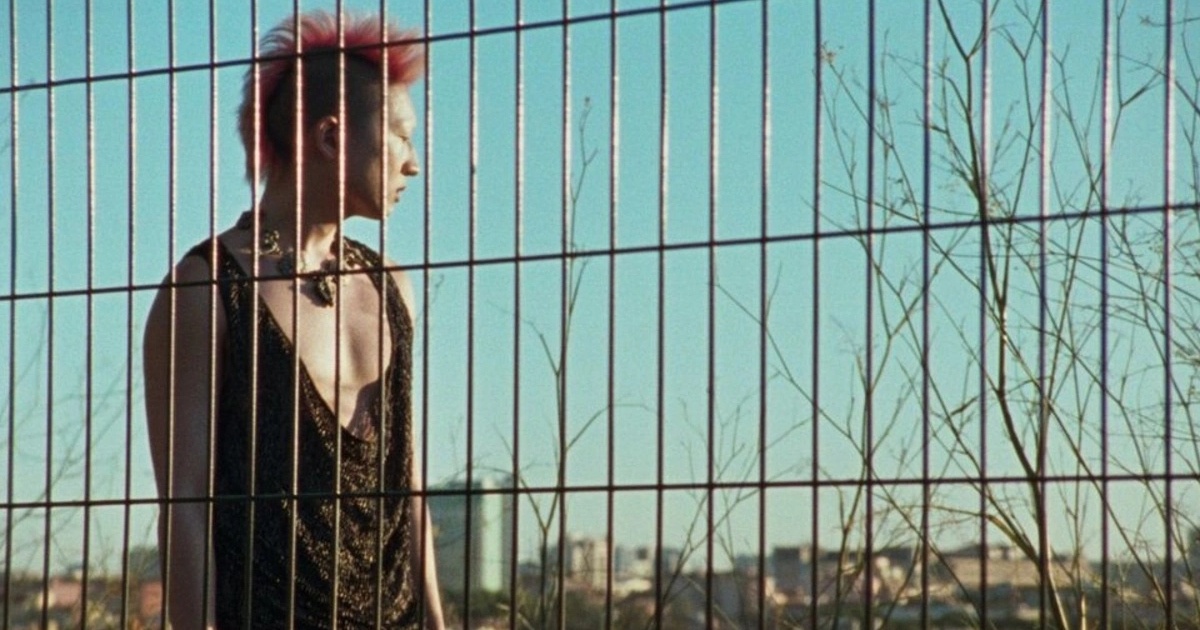
Prismatic Ground is an annual film series highlighting the latest and greatest in experimental and boundary-pushing efforts from groundbreaking new filmmakers. This year’s festival runs May 3-7 and here are a few highlights:
Starting off our preview of this year’s Prismatic Ground is easily one of the festival’s more highly anticipated features. Directed by the pair of Joao Pedro Rodrigues and Joao Rui Guerra de Mata, Where Is This Street? Or With No Before And After is an astonishingly beautiful piece of cinematic exploration. Drawing direct inspiration from the legendary Cinema Novo film The Green Years, the directing duo guide viewers through the shooting locations of Paulo Rocha’s beloved 1963 debut feature.
However, this film is also so very much more than a simple walk down cinema’s memory lane. One of the more engrossing documents of the COVID-19 pandemic, Where Is This Street finds the pair of filmmakers scouring a relatively quiet Lisbon with the hopes of finding brief moments of transcendence. While viewers encounter everything from severed limbs to city squares taken over by gangs of pigeons, Rodrigues and de Mata’s latest is at once a classic city symphony picture (maybe the great one of the social distancing era), and a gorgeously shot architecture film, it’s at its best when it embraces its focus on modern spaces void of human activity. It’s in these almost dystopian moments, paired brilliantly with the lush photography, that Where Is This Street becomes one of 2023’s truly essential motion pictures.
Speaking of essential features in this year’s Prismatic Ground lineup, Tsai Ming-Liang returns with another entry in his stunning “Walker” series. As part of the festival’s Midnight screenings, Where once again stars Lee Kang-Sheng, as he walks the streets of Paris in his red Buddhist monk robes. Arguably one of the great examples of the “slow cinema” movement, Tsai’s “Walker” series is much more than that (often dismissive) moniker may make one believe.
Lee Kang-Sheng’s performance (if one can even really describe it as that) is genuinely transcendental, with the pace of his movements being best described as near-stationary. Feeling disjointed from all the commotion of the city surrounding him, Lee becomes the focus of those who pass by him, with responses ranging from polite curiosity to out-and-out harassment. However, the most beautiful of these interactions is arguably one of the more impactful arcs in this entire series. Set opposite Lee Kang-Sheng’s walk, Anong Houngheuangsy is seen throughout the film as also wandering the streets of Paris, until the two ultimately (nearly literally) walk into one another atop a canvas at the Centre Georges Pompidou. It’s an astonishing sequence that stands as a testament to both Tsai Ming-Liang’s startling ability to create a near-spiritual energy in his films and also the sheer beauty of bodies in motion. The ninth film in this series, this may be one of the very best among this titanic collection of films.
Closing out our preview of this year’s Prismatic Ground, let’s turn to the robust shorts selection for a few highlights. Tsai Ming-Liang also shows his face in this section, with his beautiful Where Do You Stand, Tsai Ming-Liang, a 21-minute opus that finds him ruminating on his career through a series of chairs that he’s made for houses in the mountains where he lives. While Tsai isn’t necessarily a cold filmmaker, there’s a warmth here that feels new for the director, which is surprising given the fact that this is ostensibly his pandemic film. There’s a peace within the solitary here that’s very much in keeping with Tsai’s isolationist cinema, but it does seem like the filmmaker feels right at home opposite his work and the gorgeous landscape.
Next up is director Sofia Theodore-Pierce, who returns to Prismatic Ground with the brilliant Exterior Turbulence. At just 11 minutes, Theodore-Pierce’s latest is one of the more provocative shorts among this festival’s incredible lineup, a formalist meditation on the human experience. Viewers watch as the evocative intertitles hint at small glimpses of humanity, everything from a lusty appreciation for gas station coffee to one’s fear of their mind not being able to be contained. Set opposite stunning tableaus that feel in conversation with filmmakers like Bresson and Rohmer, Exterior Turbulence is unlike anything you’ve seen before or likely will see after. There’s a sequence near the film’s conclusion that’s a voiceover opposite a black screen that ultimately becomes maybe the scene of 2023. Truly a one of a kind piece of short-form storytelling.
Finally, let’s round things out with the latest from beloved filmmaker Jodie Mack. Entitled M*U*S*H, Mack returns with yet another piece of cinematic collage, this time taking viewers on an eight-minute journey of deliriously moving flower petals. As the film progresses, however, the pace slows and the film becomes something quietly surreal. At just eight minutes, the film isn’t as provocative as Mack’s recent longer-form work, but there is a beauty to her ability to turn these near-desiccated flowers into something resembling a textile. There’s a swirling, rhythmic nature to the film as it works its way to its finale which becomes intoxicating in a way that feels decidedly Mack. Singular film from a singular filmmaker.





![Bergman Island (The Criterion Collection) [Blu-ray]](https://criterioncast.com/wp-content/uploads/2022/11/bergman-island-the-criterion-collection-blu-ray-400x496.jpg)
![This Is Not a Burial, It’s a Resurrection (The Criterion Collection) [Blu-ray]](https://criterioncast.com/wp-content/uploads/2022/11/this-is-not-a-burial-its-a-resurrection-the-criterion-collection-blu-ray-400x496.jpg)
![Lars von Trier's Europe Trilogy (The Criterion Collection) [The Element of Crime/Epidemic/Europa] [Blu-ray]](https://criterioncast.com/wp-content/uploads/2022/11/lars-von-triers-europe-trilogy-the-criterion-collection-the-element-of-400x496.jpg)
![Imitation of Life (The Criterion Collection) [Blu-ray]](https://criterioncast.com/wp-content/uploads/2022/11/imitation-of-life-the-criterion-collection-blu-ray-400x496.jpg)
![The Adventures of Baron Munchausen (The Criterion Collection) [4K UHD]](https://criterioncast.com/wp-content/uploads/2022/11/the-adventures-of-baron-munchausen-the-criterion-collection-4k-uhd-400x496.jpg)
![Cooley High [Criterion Collection] [Blu-ray] [1975]](https://criterioncast.com/wp-content/uploads/2022/11/cooley-high-criterion-collection-blu-ray-1975-400x496.jpg)